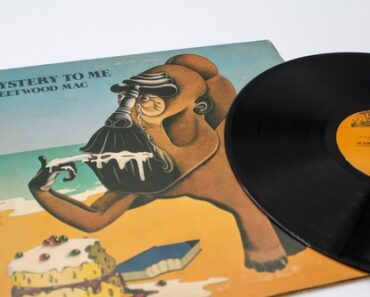Top 10 Sarah Vaughan Songs list presents the best Sarah Vaughan Songs including “Send In the Clowns,” “Broken Hearted Melody” and more. Sarah Vaughan was a 1924, New Jersey born and raised daughter to a carpenter as a father and a laundress for a mother. Both of her parents came up from the state of Virginia also had musical backgrounds of their own as Sarah’s father played the guitar and piano while her mother sang church choir. As a family, the deeply religious family were very active in the New Mount Zion Baptist Church in Newark, New Jersey. For Sarah, she began piano lessons at the age of seven and joined her mother singing in the church choir. As she learned piano, she also served as a pianist at the church during rehearsals and services.
Youthful Rebellion and Recognition
Aside from gospel music, Sarah Vaughan also took an interest in popular music at a young age. During the 1930s, she often watched local and touring bands at a street skating rink facility that showcased them. When she became a teenager, she performed as a pianist and singer at nightclubs, including the Piccadilly Club and the Newark Airport. This was done so illegally as she was underage. The genre of music she was best known for was jazz. When her preference of performing music outweighed her interest in high school, she dropped out during her junior year to focus as an entertainer full-time.
When she was eighteen years old, Sarah Vaughan encouraged her friend, Doris Robinson, to enter Apollo Theater Amateur Night contest as a singer. Vaughan accompanied her as her pianist. The ladies earned second place for their performance. Later, Vaughan entered the contest again, this time as a singer performing “Body and Soul.” She won the contest, which awarded her $10.00 USD and the opportunity to perform at the Apollo for a week. On November 20, 1942, Sarah Vaughan returned to the Apollo Theater and opened for jazz legend, Ella Fitzgerald. During the week of performances at the Apollo, Vaughan made such an impression that the theater’s bandleader and pianist, Earl Hines, replaced his current female singer with her as of April 4, 1943.
The rest of 1943 saw Sarah Vaughan touring the country with earl Hines and Billy Eckstine. Billy was lead singer for Hines’ big band at the time. Originally, Vaughan was hired as a pianist in order for Hines to comply with the jurisdiction of the American Federation of Musicians instead of the American Guild of Variety Artists’ singers union. However, after Cliff Smalls joined the band as its pianist, as well as trombone, Vaughan was limited to singing. During this period, Earl Hines and his band performed as a contemporary bebop group. Additional members to this band include Dizzy Gillespie, Charlie Parker, and Bennie Green. At the time, the musicians’ union faced a contemporary recording music ban, meaning artists like Earl Hines and his band didn’t have any commercial recordings in existence.
Before 1943 was over, Eckstine quit the band, as did Dizzy Gillespie and Charlie Parker, as Gillespie formed his own big band. This left Hines to become the new music director. Later during mid-1944, Sarah Vaughan also joined Gillespie, as did Gene Ammons, Art Blakey, Miles Davis, Kenny Dorham, Dexter Gordon, and Lucky Thompson. Doing so put her in a position to record music for the first time, which took place on December 5, 1944. She also left this band before 1944 was over but remained close with Billy Eckstine as the two recorded together frequently. It would be during this time frame Vaughan would earn the nickname “Sassy,” a name Vaughan adopted, but often spelled it as “Sassie” instead.
Going Solo
Starting in 1945, Sarah Vaughan began to freelance as a solo artist in New York City at a variety of jazz clubs and nightclubs. Although she was technically a solo artist, she still performed frequently with bigger bands, including Gillespie’s. This also included studio recordings. Come October the same year, she performed with violinist, Stuff Smitt, to record “Time and Again.” Later, she was offered a contract for Musicraft that didn’t have her record for them until spring of 1946. In the meantime, she continued to perform at different clubs that would soon have her meet George Treadwell. He went from being a trumpeter to her manager and then her husband.
When she finally began recording for Musicraft, her successful ride with them continued straight into 1948 that had her released several singles, some of them becoming jazzy hit numbers on the billboard music charts. However, due to the musicians’ union ban, this caused Musicraft to stare at the possibility of bankruptcy. This resulted in Vaughan using the missed royalty payments as an opportunity to jump ship and sign with Columbia Records. Once the legal issues were taken care of, the charting success for Vaughan continued, starting with “Black Coffee” in 1949. Although successful with Musicraft, it wasn’t until signing up with Columbia did Vaughan finally earn her dues and see an improvement in her financial situation.
Sarah Vaughan, along with husband Treadwell, purchased for themselves a three-storey home in Newark that saw them live on the top floor while Vaughan moved her parents to the lower two floors. Despite the best intentions to make their marriage last, the business demands placed on Treadwell had him hire a road manager to deal with Vaughan’s needs as a performer so that he could focus on a growing client base he developed for himself as a music manager. Since the two spent an increasing amount of time apart, the relationship between husband and wife cooled off.
Moving On
Despite the early success with Columbia Records, Sarah Vaughan found herself at odds with the label’s management style as she didn’t match the atypical standard of talent they were spending more time on. As of 1953, Treadwell managed to negotiate a new recording contract for Vaughan with Mercury Records. She made her debut recording with the new label in February 1954 and stayed with them until the end of 1959 before recording for Roulette for three years and return to Mercury from 1964 until 1967. While with Mercury, Sarah Vaughan was reunited with Billy Eckstine to perform a series of duets, including the 1957 hit “Passing Strangers.”
For Sarah Vaughan, the second half of the 1950s saw a heavy schedule of touring. While her business relationship with George Treadwell seemed steady, the personal relationship she shared with him as his wife waned due to spending too much time apart. This resulted in a divorce, which also ended all business relations once she learned the large amount of money she earned saw very little left at the timing of the divorce, which came as a shock and a disappointment. Now with Treadwell out of her life, in came Clyde Atkins as her new manager and new husband, one whom she kept a closer eye on to make sure history didn’t repeat itself. However, Atkins wasn’t nearly the gentleman Treadwell was as he was volatile and violent. Vaughan filed for divorce in 1963 and rid him out of her life once she learned he put her into deep debt due to his wild behavior.
It wouldn’t be until 1971 before Sarah Vaughan would find real love again as Marshall Fisher, a Las Vegas employee and fan, swept her off her feet as much as she swept his. Unlike her previous men, Fisher was completely devoted to her and treated her well. He used to write love poems for her, which inspired her in all of her recordings henceforth, despite running into conflicts with record labels that didn’t share her sense of creativity.
Sarah Vaughan Legacy
In 1947, Sarah Vaughan won Esquire Magazine’s New Star Award, as well as a series of awards from Down Beat Magazine from 1947 until 1952 and Metronome Magazine from 1948 until 1953. The success trail of Sarah Vaughan saw the early stages of her career blossom with performing opportunities throughout the United States between the late 1940s until the early 1950s. It would be Dave Garroway, a big-name Chicago disk jockey, that dubbed the star with her second nickname, “The Divine One.” For the remainder of Vaughan’s career, this was the nickname that seemed to be trademarked just for her.
In 1989, Sarah Vaughan was diagnosed with lung cancer after it became clear her health was fading. Among the social circle that knew Vaughan best, she was known as a heavy smoker. On April 3, 1990, she passed away while watching the movie, Laker Girls, which was a television program featuring her daughter, Deborah Lois Atkins, known professionally as Paris Vaughan. To her legacy, Sarah Vaughan recorded and released forty-eight studio albums, thirty-five compilation albums, ten live albums, two extended plays (EP), and five box sets. In total, she has eighty-nine singles to her credit, as well as two promotional songs, and seven other charted songs.
Top 10 Sarah Vaughan Songs
#10 – Tenderly
According to Sarah Vaughan, “Tenderly” was a song she was proud of as it placed her as a name to be the first to record what the industry calls a jazz standard. “Tenderly” became an unexpected hit in 1947 on the US Billboard Hot 100. She, along with Nat King Cole, recorded this song separately and are both noted for its cult classic, but it was first recorded and released by Brazilian singer, Dick Farney by July 1947. Sarah Vaughan recorded on July 2, 1947 but her version didn’t hit the charts until November 15, 1947. On the US Billboard Hot 100, it peaked at number twenty-seven. Her version was considered as a ravishing rendition and remains as the all-time favorite. In 1950, Vaughan recorded it again for MGM Studios.
#9 – It’s Magic
From the Doris Day film, Romance on the High Seas, “It’s Magic” became a chart success in 1948 for Sarah Vaughan as this beautiful jazzy ballad peaked as high as number eleven on the US Billboard Hot 100. While her version didn’t chart as high as Day’s number two achievement, it still earned itself a place among the favorites as Vaughan’s performance jazzed up what was otherwise a standard pop classic.
#8 – How Important Can it Be?
“How Important Can It Be?” was first popularized by Joni James in 1955. Sarah Vaughan recorded hers the same time as Joni James recorded her second version. When James’ publisher, MGM Records, learned of this, they rush-released hers before Vaughan’s label company at the time, Columbia, could do it. For Vaughan, it still peaked as high as number twelve on the US Billboard Hot 100 as her jazzy question to her love interest in the song wonders why her previous relationships should make any difference now that she’s in love with him and vows to stay faithful to him.
#7 – Nature Boy
“Nature Boy” was a single that first recorded and released by Nat King Cole in 1948, becoming an integral part of his big breakthrough as a jazz singer. For Sarah Vaughan, her cover of this single earned her a number nine hit on the US Billboard Hot 100 as a less orchestral version. “Nature Boy” has become a pop and jazz standard that has seen many artists cover versions of this song. “Nature Boy” was awarded the Grammy Hall of Fame Award in 1999. As successful as this song was, “Nature Boy” became the subject of lawsuits as the songwriter, George Alexander Aberle, also known as eden ahbez, found himself charged with plagiarism by Yiddish composer, Herman Yabolokoff. The matter was finally settled out of court.
#6 – Black Coffee
Released during the summer of 1949, “Black Coffee” was the first single through a Columbia Records release by Sarah Vaughan. For her, it was a number thirteen hit on the US Billboard Hot 100. It is still regarded today as the most notable version since it was first published by Sonny Burke and Paul Francis Webber in 1948. The first two measures of “Black Coffee” are nearly identical to the 1938 Mary Lou Williams song, “What’s Your Story Morning Glory.” The bluesy melodic motifs, something which Vaughan capitalized on beautifully with her vocal talent.
#5 – That Lucky Old Sun (Just Rolls Around Heaven All Day)
On the US Billboard Hot 100, “That Lucky Old Sun (Just Rolls Around Heaven All Day)” peaked at number fourteen in 1949. Sarah Vaughan’s jazzy performance deliberately contrasted the narrator’s life with the oblivious attitude regarding the natural world. From the start of the song to the end, “That Lucky Old Song” was every bit as dramatic as an audio production as a video could portray.
#4 – Passing Strangers (featuring Billy Eckstine)
This beautiful ballad was performed as a duet by Billy Eckstine and Sarah Vaughan, which was more than just a hit single shared by these two performers. This served as a professional reunion when “Perfect Strangers” was recorded in 1957. On the US Billboard Hot 100, “Passing Strangers” charted at number eighty-two. It also became Sarah Vaughan’s first hit in Australia as it peaked at number twenty-seven. The same is also said on the UK Singles Chart at number twenty-two.
#3 – If You Could See Me Now
Written for Sarah Vaughan, “If You Could See Me Now” was her first single release, which was in 1946. This joined the ranks of one of Sarah Vaughan’s signature songs and was inducted into the Grammy Hall of Fame in 1998. This beautiful jazzy number never saw any chart success, but has since become a jazz standard, as well as a major favorite among many artists that consider this song a timeless classic. The hint of sensuality as Vaughan delivered her melodic vocals made this an easy listening favorite, whether it be at a club or at home.
#2 – Broken Hearted Melody
1959’s “Broken Hearted Melody” was a song Sarah Vaughan considered corny but it actually became her first gold recording. It wound up becoming one of her signature songs that was frequently performed in her concerts for many years to come. Of all the singles she released, “Broken Hearted Melody” earned the most amount of chart recognition, starting at number seven on the US Billboard Hot 100. On the US Billboard Hot R&B/Hip-Hop Songs chart it was number five. On Canada’s CHUM chart, this single peaked at number three, marking it the first time her music charted in that nation. It also became a number eight hit on Australia’s singles chart, as well as a number seven hit on the UK Singles Chart, and at number nineteen in the Netherlands.
#1 – Send In the Clowns
The single, “Send In the Clowns” became that one signature song that saw Sarah Vaughan perform at her best. The song was written for the musical, A Little Night Music, which Vaughan learned to play on the piano. With a few changes to its original, Vaughan powered the most beloved and successful single of her career. Despite the song’s title, the musical storyline had nothing to do with painted up individuals acting silly.
It was in reference to the foolish members of society, designed as a ballad that focused on a woman meeting with a man whom she rejected years ago, learning she was still in love with him. When she attempted to pursue him, it is he that rejects her, informing her he’s committed to a marriage he personally doesn’t want to stay in but is obligated to. While this regretful soaring ballad may not have reached any official music charts, it still remains as a solid favorite among fans and music critics.
Feature Photo: William P. Gottlieb, Public domain, via Wikimedia Commons
Top 10 Sarah Vaughan Songs article published on Classic RockHistory.com© 2022
Classicrockhistory.com claims ownership of all its original content and Intellectual property under United States Copyright laws and those of all other foreign countries. No one person, business or any organizations is allowed to re-publish any of our original content anywhere on the web or in print without our permission. All photos used are either public domain creative commons photos or licensed officially from Shutterstock under license with ClassicRockHistory.com. All photo credits have been placed at end of article.




































